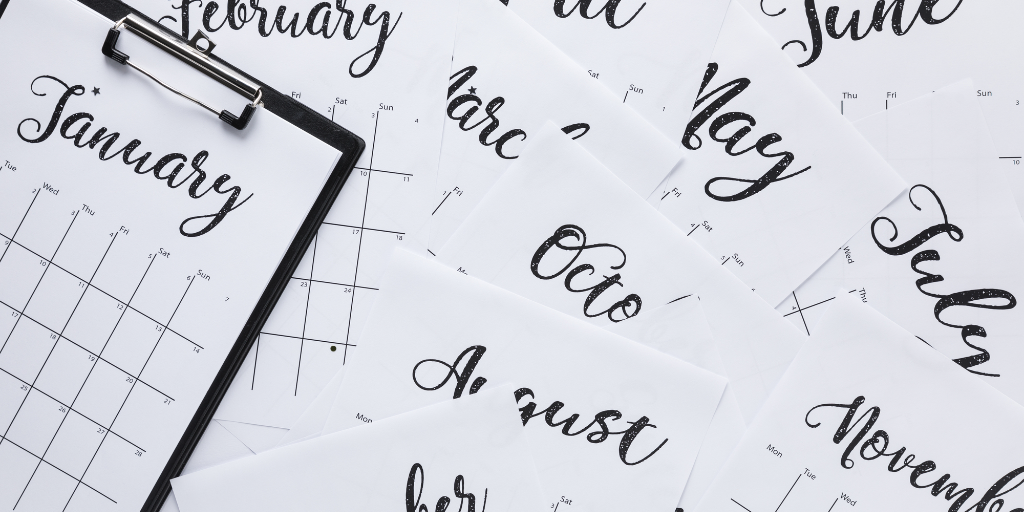Happy New Year! But why, exactly, was yesterday New Year’s Day?
Lesson summary
Hi there everyone, it’s Jeff and this is Plain English, where we help you upgrade your English with current events, trending topics, and…I guess whatever catches my attention. This is the last of our easier, holiday themed lessons. This one—I’m just warning you—includes some math. Math can be hard to listen to, but that’s why we have the transcripts at PlainEnglish.com/534.
Got that? Okay. Let’s get going.
January 1 and the Gregorian calendar
The calendar we use today, with twelve months starting with January and ending in December, is called the Gregorian calendar. It was implemented by Pope Gregory XIII in the year 1582, so about 440 years ago. That’s remarkable. But what’s even more remarkable is that the calendar before this one, the Julian calendar, was almost exactly the same as the current, Gregorian calendar.
The Julian calendar took effect in the year 46 B.C., so more than 2,000 years ago. The Julian calendar—remember, this is 2,000 years old—the Julian calendar was arranged in twelve months and had 365 days in a normal year and 366 days in a leap year, which occurred every four years. That sounds very similar to the calendar we use today, but it’s not precisely the same as what we use today.
The Julian calendar—365 days a year, except leap years—meant that a calendar year was, on average, 365.25 days. But an astronomical year is 365.2419 days. That sounds minor, but the discrepancy meant the Julian calendar would fall one day behind the true astronomical year, about once every 128 years.
So Pope Gregory XIII’s calendar sought to fix that. The Gregorian calendar goes like this: every four years is a leap year of 366 days, except leap years divisible by 100 and not divisible by 400. The effect of this change was to remove three leap days every 400 years.
A year divisible by 100 means round century numbers, like 1800, 1900, 2000, and 2100. You can divide these years by 100 and get a whole number.
So on century years like 1900 and 2000, we have to pay attention. These years are on the every-four-year leap year schedule. But because they’re divisible by 100, they might not be leap years.
Remember the rule goes like this: leap years are every four years except years divisible by 100 and not divisible by 400. Here’s another way of saying that. No century year can be a leap year unless the century year can be divided by 400. What century years are divisible by 400? Those would be years like 1200, 1600, 2000, and 2400.
If you’re listening to this lesson, there’s a high probability you were alive in the year 2000. February 29, 2000 was a special day. Every century year would ordinarily not be a leap year, but once every 400 years a century year is a leap year.
Try this out: look up the date February 29, 1896. It exists because 1896 was a leap year. Then look up February 29, 1900, four years later. It does not exist! 1900 is a century year not divisible by 400, so it’s not a leap year. Then the every-four-year cadence resumed and there was a February 29, 1904. The next century year was 2000. But since 2000 is divisible by 400, it was a leap year and there was a February 29, 2000.
Anyway, here’s my point. This little wrinkle, this rule of a leap year skipping century years except century years divisible by 400—this was the only change in the Gregorian calendar over the previous calendar. It’s a tiny change. But for this small change, our current calendar has been in use since the year 46 B.C.
I started the lesson by asking why January 1 is New Year’s Day. I thought it would have been decided when the current calendar was established. But that’s not true.
In Medieval times, the New Year was celebrated on different days in different places in different times. It was celebrated on December 25, to honor the birth of Jesus; on March 25, which commemorates the conception of Jesus; on March 1; and, in other years, on Easter.
January 1 is special for two reasons. Christians observe January 1 as the day Jesus was named, eight days after he was born. Pre-Christians observed January 1 as the new year because Janus, the god for whom the month is named, is the god of gateways and beginnings.
Most countries of Europe adopted January 1 as New Year’s Day in the 1500s. The world was not as connected then as it is now, so different countries adopted the new New Year on different years. Britain was a holdout. The U.K. and its American colonies didn’t adopt January 1 as the new year until 1752.
Excel stuck in the Middle Ages?
Earlier I told you to look up the date February 29, 1900. I hope you didn’t look it up in Microsoft Excel. If you enter the date 2/28/1900 in Microsoft Excel and if you add one day to it…Microsoft returns the date 2/29/1900, a date that does not exist.
Two weeks ago, I told you I was “very familiar with ” Excel, but even I learn something once in a while. Microsoft Excel is still operating on the Julian calendar, which has been out of date for 400 years.
To be fair to Microsoft, they knew this. But Lotus 1-2-3, the spreadsheet that came before Excel, Lotus had this bug. When Excel started, it had to be compatible with Lotus 1-2-3, the first-ever spreadsheet. So Microsoft purposely built this mistake into its software, so that Lotus worksheets would work in Excel.
Lotus was discontinued 20 years ago, but Excel still has the century leap year mistake in it. Google Sheets, however, does not.
Great stories make learning English fun

